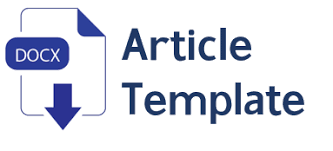Enhancing Students’ Writing Skill By Using Clustering Technique
DOI:
https://doi.org/10.29408/veles.v3i2.1553Keywords:
writing skill, recount text, clustering techniqueAbstract
In this research, the focus was to know the improvement of the students' skill in writing recount text especially based on the three aspects as mentioned above. After the implementation of this technique, the students' score was improved in each aspect. They also motivated when they were asking to write recount text based on the clustering that had made by them individually. The other strengths of this technique were that the students more enjoyed the processes of teaching and learning which made the classroom atmosphere became more alive, active and orderly. This method is interesting and easy to be implemented in the teaching and learning processes. In this technique, the students are excited and enjoy every activity in the class; they bring their all ability to find ideas, materials, and data to support their work in writing skill; they are eager to exchange their ideas when they do drafting; and they are more careful to write the text based on its, grammar, vocabulary, and mechanic in order to construct a good writing text. It means that by using clustering technique, the researcher and students achieved the goal in the teaching-learning process.
References
Anderson, M. and Anderson, K. (2003).Text Types in English 2. South Yarra: Macmillan Education Australia.
Brown, H. D. (2001). Language Assessment: Principles and Classroom Practices. New York: Longman Pearson Education.
Burns, A. (2009). Action research. In Juanita Heigham and Robert A. Croker (Eds.), QualitativeResearch in Applied Linguistic: A Practical Introduction. Basingstoke: Palgrave Macmillan
Creswell, John W. (2008). Educational research: planning, conducting, and evaluating quantitative and qualitative research. Third edition. New Jersey: Pearson.
Christie, F., and Derewianka B. (2008). School Discourse. London: Continuum.
Frans M. Royan, (2004), Cluster Strategy, Jakarta: PT GramediaPustakaUtama.
Gibbons, P. (2009). English Learners, Academic Literacy and Thinking. Portsmouth: Heinemann
Harmer, J.( 2007). How to Teach Writing 7th edition. Pearson Education Limited: London
Harmer, J. (2004). How to Teach English. New York: Longman Pearson Education.
Hayland, K. (2003). Second Language Writing. New York: Cambridge University Press.
Hendrawaty, Nurmala and Nurfitria Ambarwati. 2017. USING CLUSTERING TECHNIQUE TOWARDS STUDENTS' WRITING SKILL IN RECOUNT TEXT. DEIKSIS. Vol. 09 No.03. Hal. 350-359)
Lunsford, A. A. (2010). The St. Martin's Handbook. Bedford: St. Martin's
Meyers, A. (2005). Gateway to Academic Writing. New York: Pearson Education.
Richards, Jack C. and Willy A. Renandya, (2002). Methodology in Language Teaching: An Anthology of Current Practice. Cambridge University Press: London.
Stubbs, S. (2000). Targeting Text. Sydney: Blake Education
Triza, Retno, et al. (2016). The effect of clustering technique towards students' writing skill of narrative text in high school 5 Pariaman, West Sumatera. Research Journal of Social Sciences, vol 9 (2): 10-16)
Ur, Penny. (2009). A Course in Language Teaching: Practice and Theory London: Cambridge University Press.
Downloads
Published
How to Cite
Issue
Section
License
Authors who publish with VELES agree to the following terms:
- Authors retain copyright and grant the journal the right of first publication with the work simultaneously licensed under Creative Commons Attribution-ShareAlike 4.0 International License (CC BY-SA 4.0).
- Authors can enter into separate, additional contractual arrangements for the distribution of the journal's published version of the work (e.g., posting it to an institutional repository or publishing it in a book), with an acknowledgment of its initial publication in this journal.
- Authors are permitted and encouraged to post their work online (e.g., in institutional repositories or on their website) before and during the submission process, as this can lead to productive exchanges and earlier and greater citations of published work.
VELES is licensed under a Creative Commons Attribution-ShareAlike 4.0 International License.





